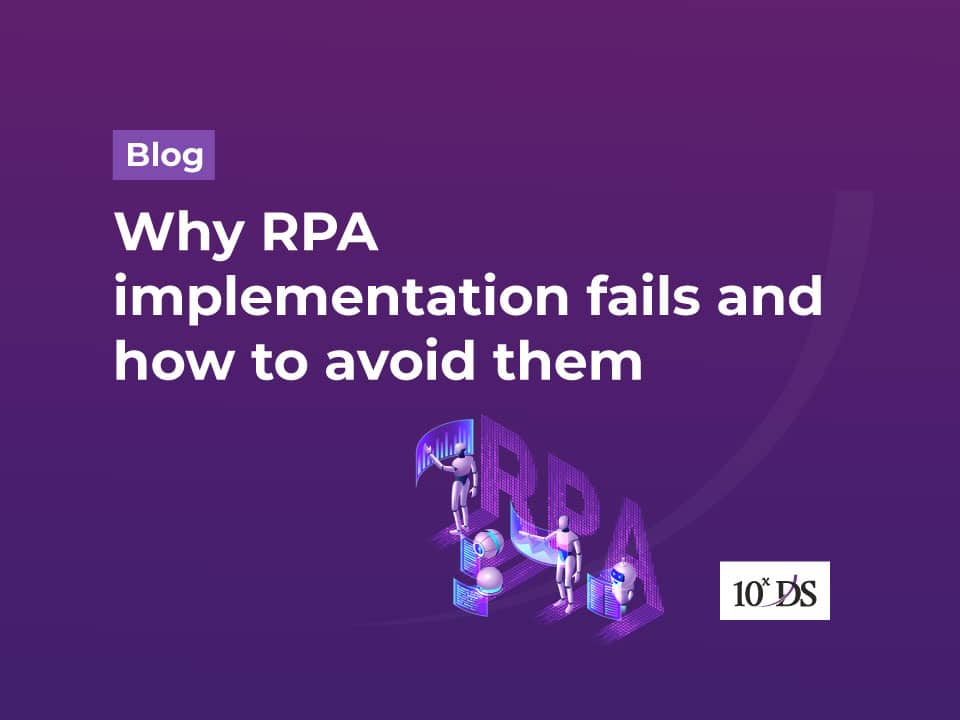
Why RPA implementation fails and how to avoid them
At first glance, robotic process automation (RPA) appears to be a straightforward process. How challenging could it be for a robot to perform simple, repetitive tasks? But if you look closer, you’ll see that there are many potential repercussions for businesses and a number of reasons why RPA projects fail.
Understanding the potential reasons for failure and how to avoid them is essential. We’ll cover that here so you can prepare your RPA project for success.
Incorrect tool selection is one of the top eight causes of failed robotic process automation (RPA) projects. There are dozens of RPA tools available today, each one competing for your business and promising to solve all your automation woes. However, figuring out what needs fixing and then using the appropriate RPA tool is crucial for the program’s successful rollout. In order to make an informed choice, you may need to dig deep into the capabilities of various technologies that can be used to expand your business. Prior to making a final decision on an RPA solution, it is always a good idea to consult with experts and possibly try out a trial version or proof of concept. Let’s check out some of the reasons why RPA implementation fails and how to avoid them.
1. A failure to properly automate the function
Discovering which processes should be automated is a crucial first step in the automation process. RPA is most useful for routine tasks that are both monotonous and simple, and do not require extensive human intervention. To try and automate tasks that require higher-level reasoning and analysis is doomed to fail. If the IT, business, and RPA teams have been involved in the selection process and have a firm grasp on the procedure to be automated, then the implementation of RPA is more than likely to go smoothly and yield positive results.
2. Weak Administration
Since RPA is so popular and has so many options, implementing it may seem simple. Certainly, it’s simpler than many might imagine, but only if good governance is present as well. Moreover, you should be aware that it requires careful administration and monitoring. Scaling the technology and achieving the desired return on investment (ROI) is next to impossible if it is not approached with the necessary rigour, expertise, and supporting teams.
3. RPA losing the plot
When RPA is put into action, it requires guidance. To assume that it can adapt to novel circumstances and acquire new knowledge over time is unrealistic. The expansion of RPA’s deployment use cases in tandem with the proliferation of cutting-edge technologies should be taken into account before, during, and after the RPA implementation process. Maintaining functional, responsive bots requires regularly updating their training and instructions.
4. Insufficient testing
Testing the automation project at hand is critical to achieving a satisfying result. Functional specifications related to RPA technology may not be clearly stated in the design documents, making it easy to miss them during testing. When developing your RPA, it’s important to test as many edge cases as possible.
5. Confusing RPA plan
Speak with everyone who might be affected by your automation efforts and get their buy-in before you begin. You should consult your IT department, business analysts, testers, process controllers, and business process consultants as early as possible in the process of developing your RPA strategy to ensure that it is well-rounded and effective. Your automated business process is more likely to become a standalone function, operate in silos, and fail to provide the expected benefits to the business if you don’t have a clear strategy for how RPA will be used.
6. Cultivating unattainable hopes and dreams
In other words, RPA will free up your employees to focus on more complex tasks while automating the more routine ones. Having unrealistic hopes that it will completely transform your company is risky. Recognize that your company will undergo shifts as a result of automation, and plan accordingly.
7. Inability to gauge success due to lack of monitoring
Automation is often overlooked in favour of more pressing concerns, such as keeping an eye on the robots’ actions and digging into unusual occurrences. As a result, the RPA team needs to establish a set of key performance indicators (KPIs) to track, along with the time and energy to analyse the data and determine whether or not the RPA project was successful.
8. Reduce the number of failed RPA projects
These are just some of the most common, but certainly not the only, causes of an automation project’s failure. As with RPA’s boundless potential for success, its failures are equally unforeseen. Pick your automation strategy with care and keep yourself informed all the way through the project’s development. Beginning the journey toward RPA can be accomplished with relative ease but also presents some challenges.
9. Hidden operations
Guardrails for bot deployments are essential for preventing RPA failure by reducing the likelihood that frontline users will make mistakes. By automating repetitive tasks, bots make it easier for people outside of the core development team to effectively create code. This can result in unchecked growth of shadowy operations within organisations.
How 10xDS can help
By consulting with our experts, you can quickly and accurately pinpoint the most pressing obstacles to automation and get started down the right road. In addition to assisting you in launching your RPA journey, our comprehensive set of services will protect you from potential pitfalls along the way.


